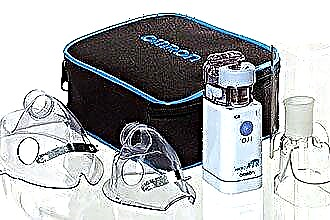What is mitral stenosis?
Mitral stenosis (MS) is a cardiac pathology caused by an abnormal structural defect (narrowing of the left atrioventricular opening) that prevents the passage of blood from the left atrium to the ventricle, caused by degenerative processes of the mitral valve (MV).
The narrowing of the left AV (atrioventricular) opening occurs due to adhesion, and then fusion of the tangent edges of the MV valves, the fusion sites are called commissures. Next to this, the valves flatten, shorten and thicken the chordal filaments. The consequence of this is the prolapse of the MV valves into the cavity of the ventricle.
The hemodynamic effect causes damage to the valve on the leaflets with parietal thrombosis. Further organization of blood clots provokes even greater fusion of the MV valves and the progression of the disease. With MS, the process involves the structures lying under the valve: the chords shorten, thicken and grow together. Sometimes there is a calcification of the commissures, which makes the leaves practically immobile.
The reasons for the development of the defect and its classification
Etiology of MS:
- Rheumatism (in 80% of cases);
- Infectious, septic endocarditis;
SLE, rheumatoid arthritis, storage diseases, amyloidosis;
- Asymmetric LV hypertrophy in HCM;
- CHD (Lutembashe syndrome, patent duct Botalov, myocardial fibroelastosis, coarctation of the aorta, subaortic stenosis);
- Mixoma;
- Thrombus in the left atrium;
- Carcinomatosis;
- Tertiary syphilis;
- The action of medicines (preparations based on wormwood);
- Restenosis after commissurotomy, MK prosthetics.
Types of mitral stenosis
By the anatomical characteristics of the narrowing:
- Narrowing like a jacket buttonhole - the valve looks like a jumper with marginal fusion of fibrosed valves, a slight shortening of the chordal filaments is visualized;
- Funnel-shaped narrowing of the "fish mouth" type - the valve cusps are low soldered to the papillary muscles;
- Combined stenosis.
The degree of narrowing of the mitral valve
In a healthy person, the area of the left AV mouth is 4-6 cm2. Clinically, stenosis manifests itself when the area decreases to 2 cm2... When narrowing to 1 cm2 there is a sharp decrease in exercise tolerance.
According to the magnitude of the narrowing of the MC, stenosis is divided into:
- Minimal stenosis;
- Sharp - less than 0.5 cm total area2;
- Pronounced - area from 0.5 to 1 cm2;
- Moderate - tapering from 1 to 1.5 cm2;
- Minor - hole area more than 2 cm2.
The main symptoms and clinical signs of pathology
The semiotics of the clinical manifestations of the disease depends on the stage of the stenosis:
- I - compensatory - the patient has no complaints. Signs of MS are found on auscultation, echocardiography, on the ECG, only signs of LA overload;
- II - stagnation in a small circle - with paroxysms of shortness of breath, disability;
- III - right ventricular failure - persistent pulmonary hypertension with the formation of a "second barrier", CHF;
- IV - dystrophic - symptoms of blood flow disorders in both circles, drug support can temporarily improve the condition, rhythm disturbance;
- V - terminal - critical circulatory disorders are comparable to CHF III stage.
Subjective symptoms of mitral stenosis:
- decreased exercise tolerance;
- chronic fatigue, paroxysmal dyspnea (later and at rest);
- cough with hemoptysis;
- recurrent pulmonary infections (bronchitis, pneumonia);
- palpitations;
- swelling in the right hypochondrium;
- hoarseness (hypertrophied LA compresses the left laryngeal recurrent nerve - S. Ortner), discomfort in the pericardial region.
Objective data:
Facies mitralis - blue-red butterfly blush on the face
- "Heart hump", the presence of epigastric pulsation (pancreatic hypertrophy);
- Peripheral edema, acrocyanosis, hepatomegaly, hydrothorax, ascites;
- Tachycardia, atrial fibrillation, pulsus deferens (difference in pulses in the radial arteries);
- Diastolic vibration of the chest ("cat's rumbling");
- Percussion - broadening of the borders of cardiac dullness up and to the right;
- Auscultatory picture: "quail rhythm"
- strong, clanging I tone in the IV intercostal space on the left,
- the clatter of the opening of the MK at the end of the II tone;
- protodastolic murmur with presystolic amplification;
- accent of the II tone in the second intercostal space on the right and the fading noise of Graham-Still.
According to the results of the ECG, there are:
- Symptoms of left atrial hypertrophy and overload:
- Two-apical P in I, avL, V4,5,6;
- Significant jump in the amplitude and duration of the P wave in the second phase in V1;
- The lengthening of the period of the internal deflection P is longer than 0.06 s.
- Symptoms of right heart hypertrophy:
- 2.1 Deviation of EOS to the right, dislocation of the S-T interval and inversion of the T wave in avF, III;
- 2.2 R wave growth in the right, S wave in the left chest leads;
- 2.3 ST segment depression and negative T in the right chest leads.
- Blockade of LNBH of varying severity.
- Large-wave form of atrial fibrillation.
Echocardiography contains:
- One-way movement of both MK valves anteriorly;
- Slowing down the premature locking of the anterior valve of the MK during diastole;
- Decrease in the amplitude of movement of the anterior sash of the MC;
- Expanded diameter of the cavities of the left heart.
To clarify the stage of the disease, Ro-graphy of OGK, ultrasound of OBP, exercise tolerance test are performed.
Features of hemodynamic disturbances in mitral stenosis
The orifice area, after which significant hemodynamic disturbances occur -1-1.5 cm2... Normal intracavitary pressure in the left atrium ranges from 5 to 6 mm Hg, and the diastolic pressure gradient between the LA and LV is 1–2 mm Hg.
Left AV foramen stenosis impedes blood flow and changes intracardiac hemodynamic parameters. Narrowing of the mouth of the MK to 1 cm2 causes an increase in the intracavitary pressure of the left atrium and in the pulmonary venules up to 25-30 mm Hg. and the growth of the diastolic gradient up to 30-40 mm Hg. High intracavitary pressure causes hypertrophy of the left atrial muscle layer to ensure that blood is pushed into the LV. Through the narrowed orifice, blood flow slows down, the time of LV blood filling is lengthened, therefore, the LA is emptied for a long time and not completely.
Decreased LV blood supply causes ineffective systole, a decrease in ejection fraction and, as a consequence, minute blood volume. The increased pressure is passively transmitted from the LA to the pulmonary vessels, provoking pulmonary hypertension. When the borderline pressure in the vessels of the lungs is reached (above 30 mm Hg), a protective precapillary spasm of small arterioles of the small circle develops (Kitaev's baroreceptor reflex). The result of a long-term spasm is the hardening of the vascular wall, which further aggravates the phenomenon of insufficiency in the pulmonary circulation.
Refractory hypertension of the small circle (more than 150-180 mm Hg) leads to a thickening of the walls of the right ventricle, and subsequently its tonogenic dilatation with relative insufficiency of the tricuspid valve. The result of the above pathological processes is the decompensation of blood circulation in a large circle.
Treatment of the disease
Unfortunately, there is no specific conservative therapy for this disease. Medication is aimed at:
- Prevention of rheumatic heart disease;
- Antibiotic prophylaxis before invasive procedures (prevention of infective endocarditis);
- Therapy of the complications that have arisen.
Indications for conservative (drug) treatment and its main features
Indications for conservative management of patients with MS:
- I, II and V stages of stenosis (when invasive treatment is not advisable);
- Correction of pulmonary hypertension, rhythm disturbances, hemoptysis, HNK;
- Emergency care for pulmonary edema.
The MS therapy regimen includes:
- Diuretics
- Sustained-release nitrates;
- β-blockers;
- Anticoagulants;
- Ca blockers2+-channels;
- Antiarrhythmic drugs.
When is surgery performed and how is it performed?
Indications for surgical treatment:
- Pulmonary hypertension symptoms;
- MC hole area less than 1.5 cm2;
- Asymptomatic course with a high risk of thromboembolism;
- Pregnancy planning.
Types of invasive treatments:
Percutaneous mitral commissurotomy is a rupture or dismemberment of fused commissures using a balloon inserted through a catheter through the interatrial septum. Has high efficiency, low risk of complications, quick recovery. Not used in advanced stages and intracardiac complications.
- Open valvotomy is an open heart surgery using extracorporeal oxygenation. It is performed in the presence of a thrombus in the LA, calcification of both commissures, combined heart defects, coronary artery disease with the necessary CABG.
- Anuloplasty (mitral valve replacement) - is performed for patients with critical lesions of the valve apparatus, in NYHA class III / IV. Has a higher risk of complications, mortality comparable to commissurotomy. Compliance with all the recommendations of postoperative rehabilitation significantly reduces the above risks.
What is the prognosis for patients with mitral stenosis of varying severity?
Without surgical treatment, the life expectancy of patients with MS is 40-45 years, about 15% of patients overcome the fifty-year mark.
Invasive treatment of mitral valve stenosis can significantly prolong and improve quality of life. The 10-year postoperative survival rate is 85%.
The most unfavorable prognosis for patients with stages IV and V, when the compensatory capabilities of the myocardium are insufficient and non-reversible lesions of internal organs develop. Medication correction of complications helps to prolong life a little.
Conclusions
Despite the relatively favorable course of mitral stenosis, with insufficient drug support and the absence of surgical treatment, circulatory decompensation inevitably occurs. The main causes of death of patients: progressive heart failure, thromboembolic complications, fatal rhythm disturbances. Conducting primary and secondary prevention of rheumatic heart disease significantly reduces the risk of developing mitral stenosis.



